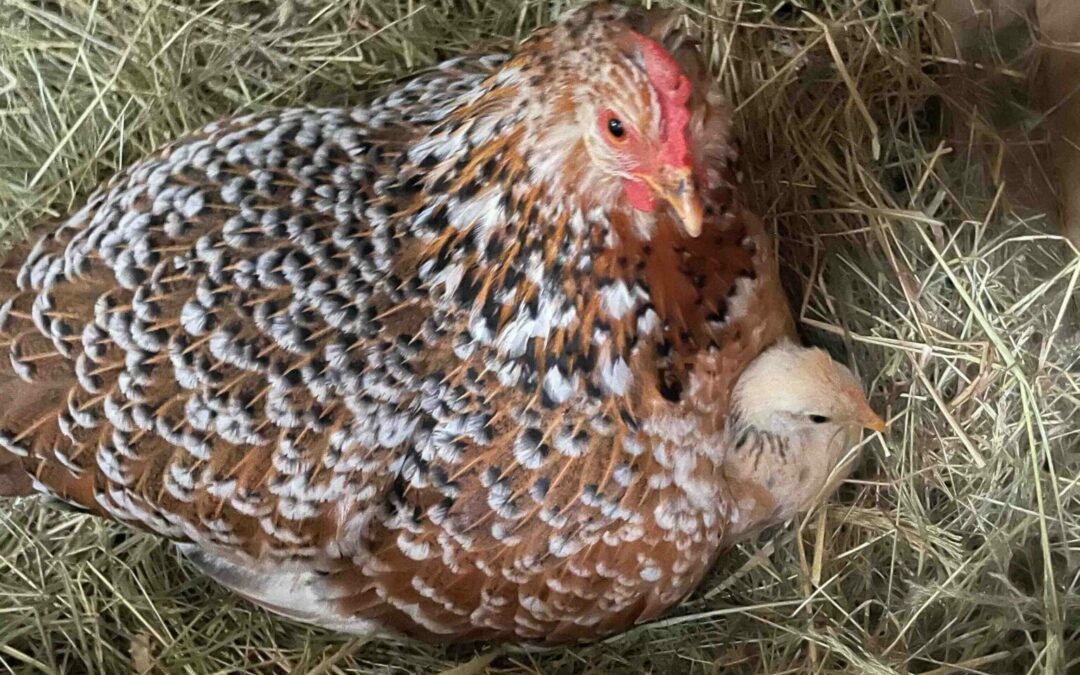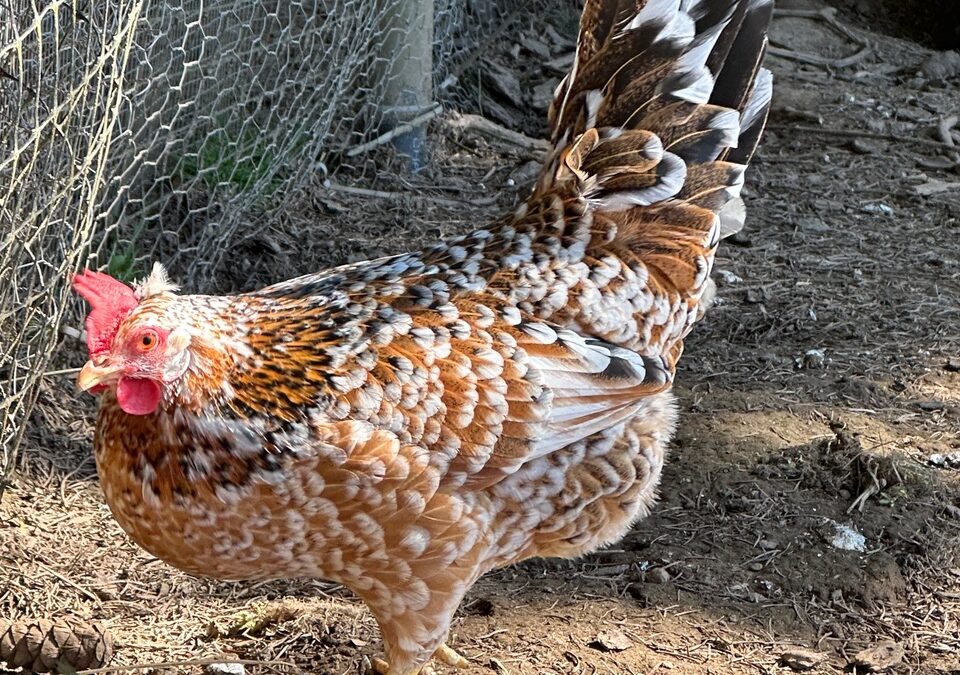
The Vulnerable Rooster
A few days ago I made my morning walk up to the chickens with the dogs. As I approached the gate, I saw Sven, our rooster, standing with his back to the gate in what appeared to be a protective stance. Sven is 2 years old and to date hasn’t been aggressive with me or the other hens. My first thought was that perhaps that “switch” had flipped in his head and he was ready to fight. I opened the gate and asked him if he was planning on moving. As I did, I realized his spur was caught in the chicken netting and he was stuck. He tried to free himself, but he couldn’t. He was so nervous with me so close that he kept trying to get away, making the situation worse.
I walked back to the house to get some snips and returned to the gate. I was hoping I could cut the netting from under the gate, but that didn’t work. So, I slowly eased myself into the coop and crouched down next to him, within about 12 inches. He stood completely still.
Slowly, I started to cut away the netting around his spur. After four cuts, he was able to free himself and run away. I watched him for a bit to make sure he wasn’t injured. He looked OK, but he wasn’t quite as “cocky” as he normally is.
I walked back to the house feeling pretty good about myself and saving my rooster. But then I started to think about him. He’d been stuck and had to succumb to my help in order to get free. I’m sure that was hard for him at some deep chicken level.
I wonder, if I had been in his shoes, could I have stood there and waited to be cut free? Knowing myself, I would have struggled for a long time before I actually asked for help. I believe I am not alone – a lot of people have that same challenge. It can be humbling and sometimes demoralizing to admit we can’t do it alone.
I have always been the person who is willing to step in and help others, but when I need someone to lean on, it is very difficult for me to admit it and even more difficult to actually ask for help.
However, what I have learned in the past year is that my relationships with my clients, my friends and my family are deeper when I share what is going on in my life, including areas where I’m struggling and need help. It has taken me a long time to get to the point where I could do that, much less write about it. A wise person in my life once told me, “You can’t truly be of service to others until you allow others to serve you.”
When you look at yourself and the people around you, are you paying attention to what is going on in their lives? Are you creating an environment where people are comfortable asking for help? Are you slowing down and really connecting or are you double booked, often cancelling your one-on-ones for things that seem more urgent in the moment?
Looking inward, are you allowing others to help you, or are you trying to project the image of someone who has it all together? If this is hard for you, I understand. But developing deep, meaningful relationships requires honesty and vulnerability.
Still not convinced? Research shows that companies with a culture of belonging and caring have less turnover, higher productivity and are more profitable. Sounds like a win-win proposition! If you see the value but aren’t sure how to start, please reach out to me. I’m here to listen and support you on this journey.




